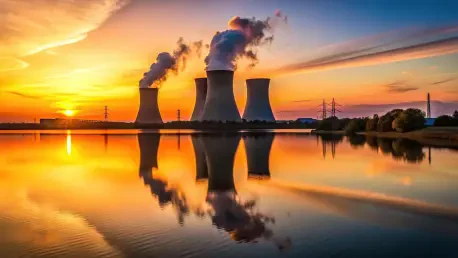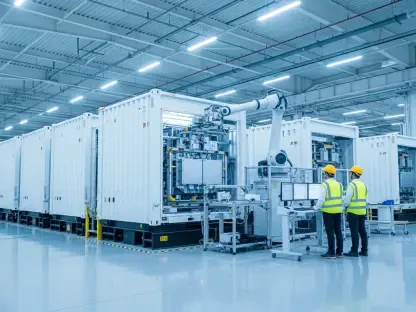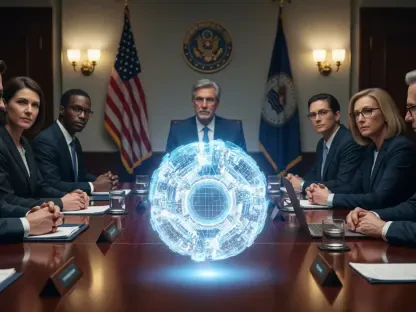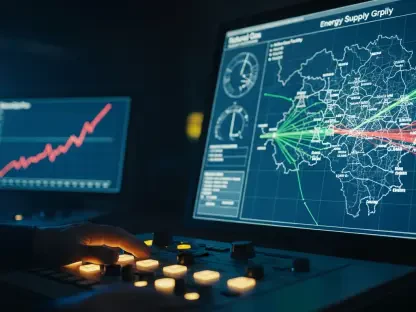In this engaging discussion, we sit down with Christopher Hailstone, a renowned expert in energy management and nuclear diplomacy, to explore the intricacies of the ongoing U.S.-Iran nuclear negotiations. Christopher shares his insights on the current state of affairs, the hurdles both nations face, and the potential implications of an agreement. This conversation sheds light on the challenges and opportunities within international nuclear diplomacy.
What recent developments have occurred in the U.S.-Iran nuclear negotiations?
Recent developments in the U.S.-Iran nuclear negotiations reflect a heightened level of engagement, with both nations seemingly eager to reach a consensus for long-term peace. On the surface, it appears progress is being made, yet beneath that lies a complex web of conditions that must be addressed to reach a workable agreement.
Can you elaborate on the terms to which Iran has “sort of” agreed? What are the specifics of these terms?
The phrasing “sort of” suggests there’s tentative agreement on some issues but significant ambiguity remains. Iran has indicated willingness to engage by discussing limitations on uranium enrichment and stockpile reductions, provided sanctions are lifted. The details, however, still need precise definition and mutual acknowledgment.
How would you characterize the current state of negotiations between the United States and Iran? What makes them “very serious”?
The negotiations are “very serious” because both parties acknowledge the monumental impact a deal could have on regional stability and economies worldwide. The stakes are notably high, which is compelling both sides to tread carefully and negotiate with a focused intent to avoid military escalation.
President Trump mentioned two steps in achieving this deal. Could you explain the “very, very nice step” and the “violent step”?
When President Trump referred to a “very, very nice step” and a “violent step,” he highlighted the dual-path nature of diplomacy versus conflict. The “nice step” likely involves a diplomatic resolution with minimum conflict, while the “violent step” alludes to military responses or sanctions that could result if negotiations falter.
What are the remaining gaps in the talks according to the Iranian source familiar with the negotiations? How significant are these gaps?
The remaining gaps in the talks are crucial, involving Iran’s demand for sanctions relief and uranium enrichment rights. These gaps are significant because they touch on Iran’s economic needs and national sovereignty, creating substantial barriers that must be bridged for any lasting agreement.
How have oil prices reacted to the news of a potential U.S.-Iran nuclear deal?
Oil prices have reacted noticeably, declining as markets anticipate a potential deal. This reaction underlines the impact of geopolitical movements on global markets, with traders banking on sanctions easing that could increase oil exports from Iran, thereby affecting supply dynamics.
Can you detail the outcomes of the recent round of negotiations in Oman? What progress was made?
The recent negotiations in Oman served as a platform to address longstanding issues, though the publicized outcomes show that progress remains incremental. The talks yielded no final deal, highlighting the need for more discussions to harmonize differences on crucial issues such as uranium enrichment levels and sanctions.
What is Iran’s stance on uranium enrichment as a part of these negotiations? Why is this a sticking point?
Iran is staunchly protective of its right to uranium enrichment, a core component of its civilian nuclear program. This issue becomes a sticking point because it challenges regional power dynamics and raises concern over the potential for nuclear weapon development, making it a pivotal aspect of negotiations.
In what ways does the U.S. proposal align or differ from Iran’s expectations in the nuclear dispute?
The U.S. proposal aims to curb Iran’s nuclear capabilities, aligning only partly with Iran’s expectations. While Iran seeks recognition of its right to nuclear development for peaceful purposes, the U.S. remains wary, emphasizing stricter controls that veer from Iran’s broader expectations on autonomy.
Can you explain Iran’s red lines regarding uranium enrichment and sanctions lifting?
Iran’s red lines are clear: limiting uranium enrichment must not impinge on their sovereign rights, and sanctions imposed since 2018 must be comprehensively lifted. These non-negotiable stands stem from economic imperatives and a desire to maintain national integrity under international norms.
How does Iran view its rights under the Non-Proliferation Treaty (NPT), and how does this affect negotiations?
Under the NPT, Iran views itself as entitled to pursue nuclear technology for peaceful purposes, a position that influences negotiations by setting a baseline for what it considers a fair agreement. This perspective keeps the focus on maintaining sovereign rights amidst international scrutiny.
What are Tehran’s conditions for accepting limits on uranium enrichment?
Tehran’s conditions for accepting limits are tightly interwoven with assurances that economic sanctions will be lifted and that future diplomatic engagements won’t jeopardize its national interests. Such conditions are pivotal to ensuring Iran’s economic recovery and maintaining its prestige on the world stage.
On what grounds does Iran request the lifting of sanctions imposed since 2018?
Iran argues that sanctions imposed since 2018 are unjust, based on its compliance with international norms prior to their reapplication. Tehran requests their removal both as economic relief and a gesture of goodwill to restore trust and pave the way for productive diplomacy.
What guarantees does Iran seek to ensure that a future U.S. administration doesn’t ditch the nuclear pact again?
Iran seeks tangible, legally binding guarantees that extend beyond political promises, requiring bipartisan support or international safeguarding mechanisms to prevent future administrations from unilaterally pulling out, as happened previously under the Trump administration.
How is America responding to Iran’s proposed concessions, particularly regarding uranium enrichment stockpile reduction?
America’s response remains cautiously optimistic, focusing on verifiable actions and reducing stockpiles in phases. This response underscores the need for trust but also highlights a tough stance on adherence to set limits, which remains complex given Iran’s past transparency issues.
What disagreements exist between the U.S. and Iran concerning the destinations for highly enriched uranium?
Disagreements over this issue hinge on logistical and security concerns. The U.S. demands assurance that the uranium sent abroad won’t return or be misused, while Iran emphasizes ownership and the benefits of keeping material within the region, highlighting geopolitical tensions.
Given the complexities involved, what are the next steps in these nuclear negotiations?
The next steps involve building mutual trust through incremental, verifiable actions, focusing on bridging identified gaps. Both nations must engage in continued dialogue with international partners to craft a balanced, sustainable agreement that addresses security and economic needs.









